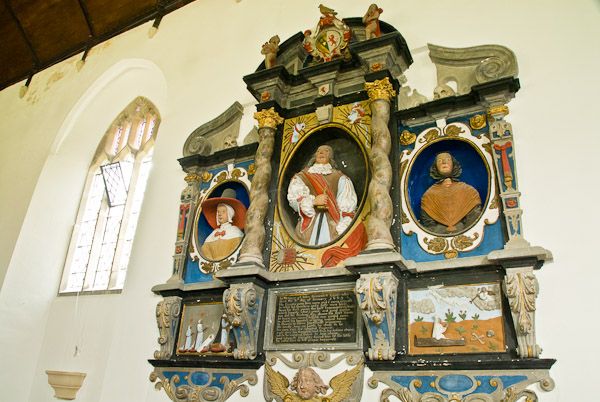Illustrated Dictionary of British Churches - Wall Monument Definition
History and Architecture
- Aisle
- Altar
- Ambulatory
- Angel Roof
- Apophyge
- Apse
- Arcade
- Arch
- Archivolt
- Base
- Battlement
- Bay
- Belfry
- Bell Tower
- Bellcote
- Bench End
- Board Bell Turret
- Body
- Boss
- Box pew
- Bracket
- Broach Spire
- Buttress
- Canopy
- Capital
- Cartouche
- Chancel
- Chancel Arch
- Chancel Screen
- Chantry
- Chapel
- Chapter House
- Choir
- Clerestory
- Cloister
- Communion Rail
- Compound Column
- Consecration Cross
- Corbel Head
- Crossing
- Crypt
- Early English
- Easter Sepulchre
- Effigy
- Fan Vaulting
- Font
- Font cover
- Funerary Helm
- Gallery
- Gargoyle
- Gothic
- Green Man
- Grotesque
- Hatchment
- Herringbone
- Hogback Tomb
- Holy Water Stoup
- Hunky Punk
- Jesse Window
- Kempe Window
- Lady Chapel
- Lancet
- Lectern
- Lierne
- Lych Gate
- Misericord
- Monumental Brass
- Mullion
- Nave
- Ogee
- Organ
- Parclose Screen
- Parish Chest
- Pendant
- Perpendicular Gothic
- Pew
- Pinnacle
- Piscina
- Poor Box
- Poppy Head
- Porch
- Priest's Door
- Pulpit
- Purbeck Marble
- Quire
- Rebus
- Reliquary
- Reredos
- Retable
- Romanesque
- Rood
- Rood Loft
- Rood screen
- Rood Stair
- Rose Window
- Round Tower
- Sanctuary
- Sanctuary Knocker
- Saxon Period
- Scratch Dial
- Sedilia
- Spire
- Statue Niche
- Stoup
- Tomb Recess
- Tracery
- Transept
- Triforium
- Tympanum
- Undercroft
- Vaulting
- Victorian Gothic
- Wall Monument
- Wall Painting
- Wheel Window
Wall Monument
Sometimes called mural monuments, the wall monument is exactly what it sounds like; a funerary monument set against or hanging upon a church wall. In the medieval period the most common form of monument was a horizontal tomb, like a chest, sometimes with an effigy of the deceased on a slab atop the chest. Around the time of the Reformation it became more popular to create a hanging mural, often using half-length effigy figures, carved and painted. These half length effigies are sometimes called 'demi-figures'.
A common Elizabethan and Jacobean style was to show small carved and painted figures of a kneeling couple facing each other across a small altar, with still smaller figures of the children arranged in rows of male and female figures along the front of the memorial. Such memorials were often decorated with heraldic emblems showing the real - or imaginery - family history of the deceased.
During the Georgian and Victorian period wall monuments were often shown as a cartouche, or form of stylised classical scroll, with an inscription to the deceased within the scroll.






